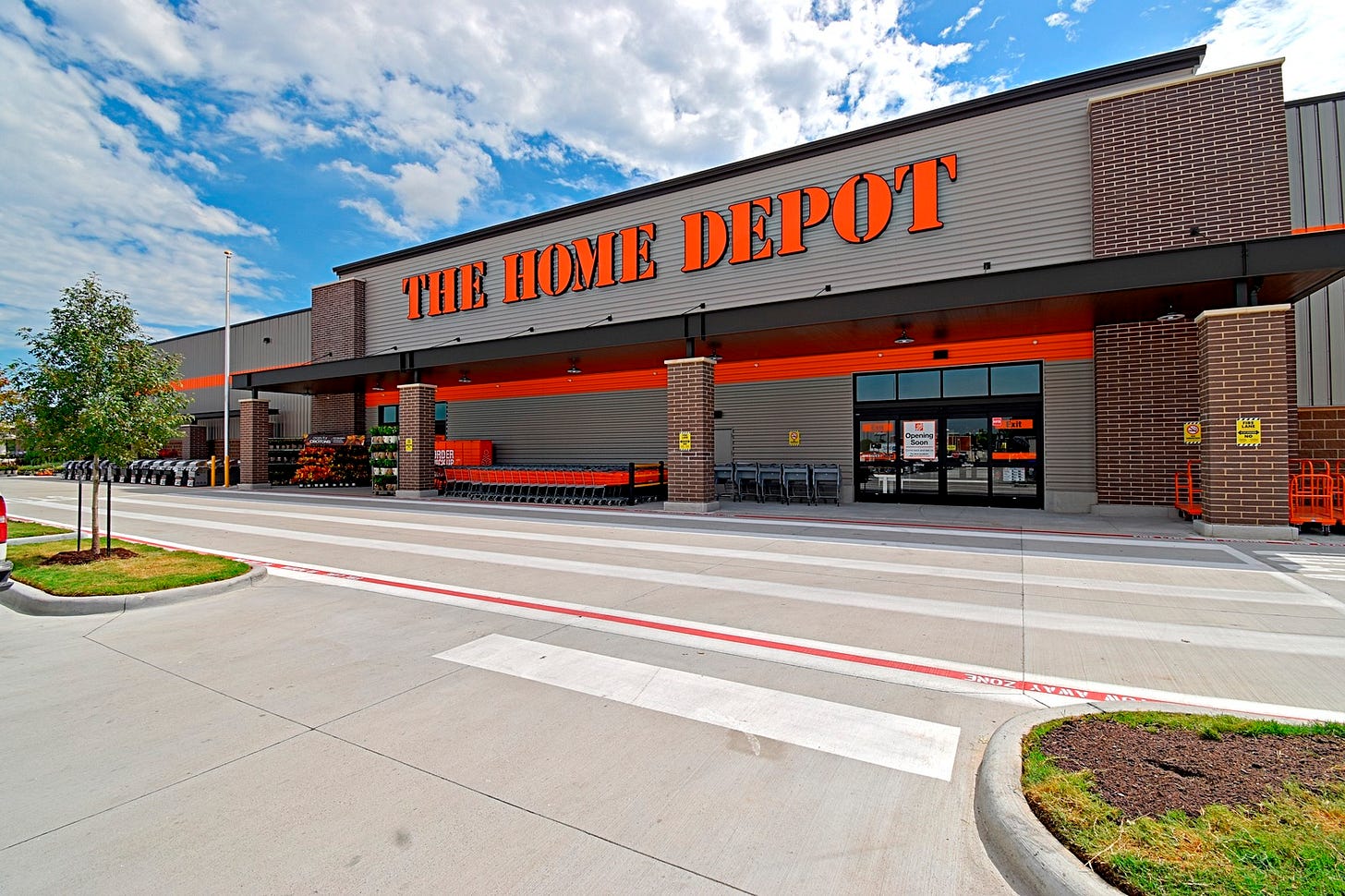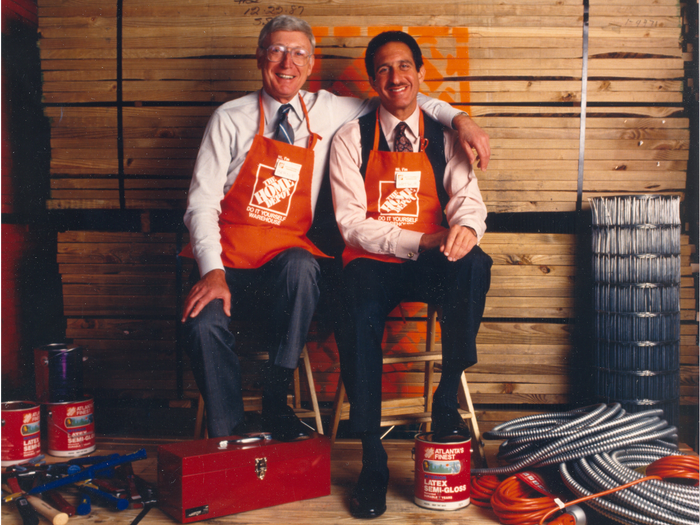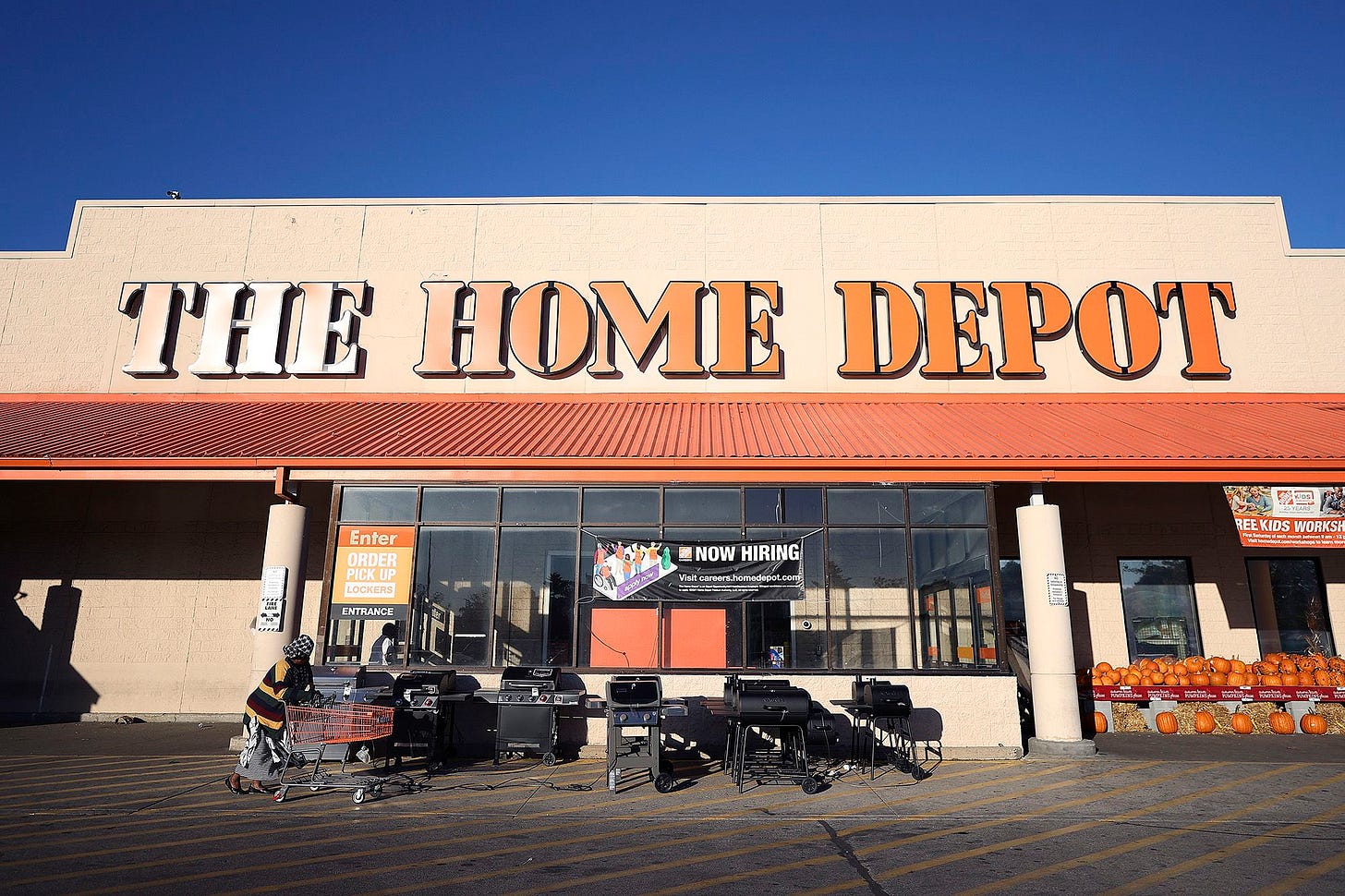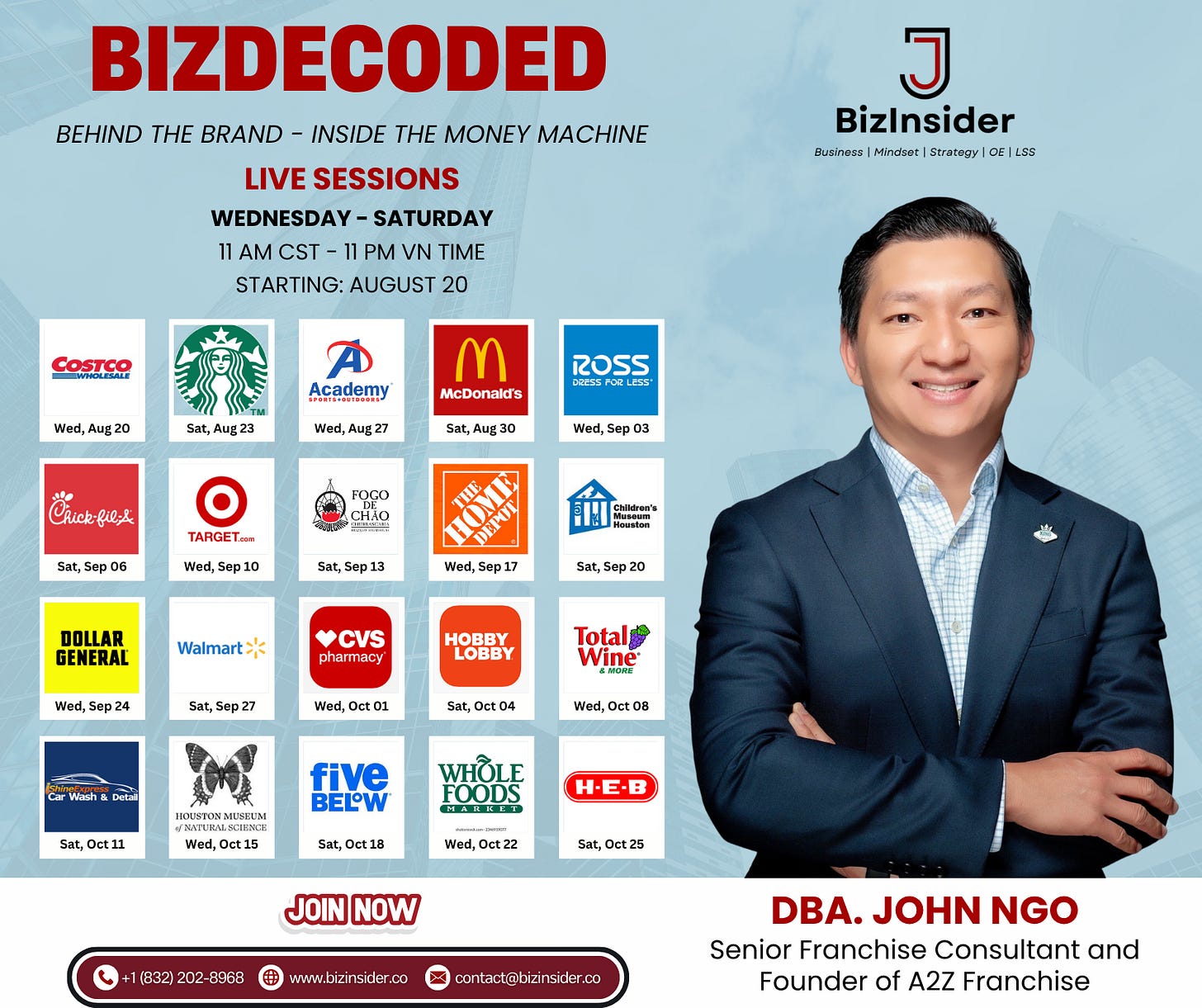Home Depot: Building More Than Homes – A Retail Powerhouse in DIY and Contractor Excellence
Welcome to my unique weekly article for the paid subscriber-only edition.
Outlines and Key Takeaways
Introduction
Founders and Board of Directors (BOD)
Background and History
Business Model
Unique Selling Proposition (USP)
Segmentation, Targeting, Positioning (STP)
What’s Next?
Lessons Learned and Conclusions
🔶 Introduction
Home Depot isn’t just a store—it’s a movement in home improvement. As the world’s largest home improvement retailer, it has transformed how both professionals and DIYers shop, plan, and build. With over 2,300 stores across North America, Home Depot has become a critical player in the retail and construction sectors.
🔶 Founders and Board of Directors (BOD)
Founded in 1978 by Bernie Marcus and Arthur Blank, Home Depot was born out of a simple yet bold vision: provide quality home improvement products at competitive prices with world-class customer service. Today, the board includes experienced leaders across retail, technology, and finance—ensuring Home Depot continues its innovative momentum in a dynamic global market.
🔶 Background and History
Starting with just two stores in Atlanta, Georgia, Home Depot revolutionized the hardware store model by offering warehouse-style layouts, extensive product categories, and trained associates who weren’t just clerks—they were experts. This commitment to empowering customers with both tools and knowledge fueled rapid growth throughout the '80s and '90s.
🔶 Business Model
Home Depot’s business model revolves around high-volume, low-margin retail operations. What sets it apart is its ability to serve both retail consumers and professional contractors with equal precision. From in-store services to mobile apps, delivery, and B2B partnerships, the company embraces an omnichannel strategy supported by best-in-class logistics and data analytics.
🔶 Unique Selling Proposition (USP)
What makes Home Depot unique is its focus on Pro Customers—contractors, plumbers, and electricians—by offering volume pricing, job-site delivery, exclusive loyalty programs, and designated Pro Desks in stores. At the same time, it’s built a beloved brand for DIYers with how-to content, expert associates, and an unparalleled inventory.
🔶 Segmentation, Targeting, Positioning (STP)
Segmentation: Home Depot segments by customer type—DIYers, Pro customers, and large-scale builders.
Targeting: It tailors experiences, promotions, and tools for each group using CRM and loyalty data.
Positioning: The brand positions itself as “More Saving. More Doing.”, with value, availability, and expertise at its core.
🔶 What’s Next?
Home Depot continues to invest in supply chain automation, AI-enabled forecasting, and customer personalization. Expansion into smart home technology, green energy solutions, and professional services shows the brand’s future lies beyond the aisles—into homes and businesses alike. The company also remains focused on sustainability, supplier diversity, and workforce development.
🔶 Lessons Learned and Conclusions
Home Depot teaches us the power of:
Operational excellence in inventory and logistics
Understanding and serving multiple customer segments with precision
Empowering employees to become brand ambassadors
Innovating while staying grounded in core values
Whether you're building a deck or scaling a franchise, Home Depot’s journey offers essential lessons in leadership, execution, and customer loyalty. 🧰📦
👉 Follow BizInsider for more brand deep-dives and growth strategies that help you level up your business.
BIZDECODED - behind the brand - inside the money machine
🚨 Don’t Miss Out – Register Now
📍 Live Sessions Every Wednesday + Saturday
🕚 11:00 AM CST | Starting August 2025
🎥 Real brands. Real lessons. Real business transformation
🎟️ Full Access: $799
🎟️ Loyal Fans: $50 discount
🎟️ AMA Roadtrip Alumni: $100 discount
📽️ Recap Only: $399 (recordings + articles)
🚀 Register Now – Early Bird Discount Ends Soon!
Seats are limited for the live experience.
Sign up today to lock in the $599 early bird rate and secure your front-row seat to 20 powerful sessions with DBA John Ngo – a rare voice of authority who combines theory, action, and field expertise like no one else.
This is where brands are decoded.
This is how you level up.
Welcome to BizDecoded: Behind the Brand – Inside the Money Machine.
Exclusively on BizInsider.
🔗 Reserve your spot now – these are the brand insights you can’t Google.
👉 Join the program now!
#BizDecoded #BizInsiderDeepDive #HomeDepotSuccess #RetailLeadership #OperationalExcellence









